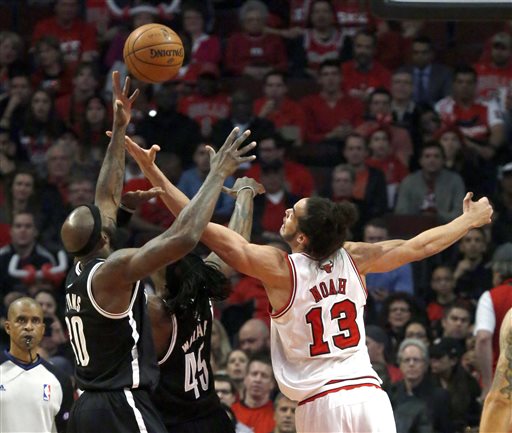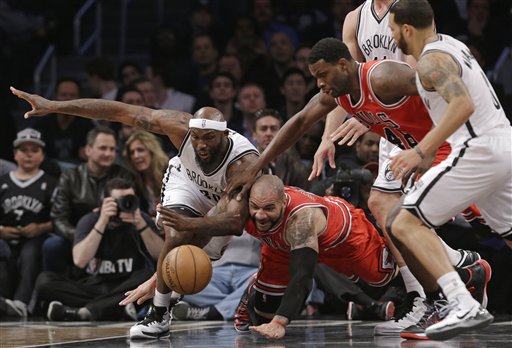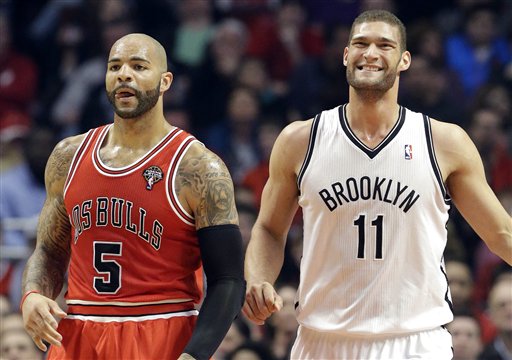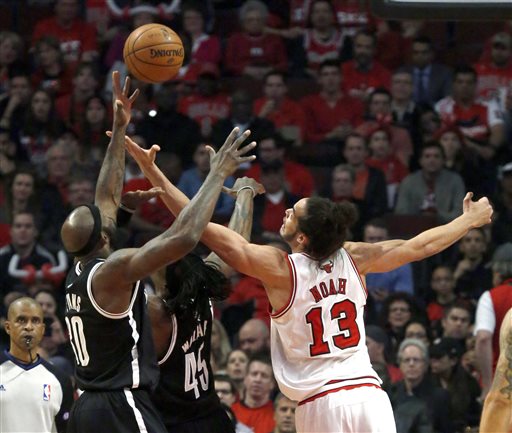
The Brooklyn Nets fired on all cylinders to kick off Game 4 Thursday night, taking a quick 17-5 lead in under six minutes against the Chicago Bulls. That didn’t last long.
So how did a 17-5 lead with 6:25 remaining in the first quarter turn into a 33-21 deficit with 4:50 left in the second? How did the Nets shoot 1-25 and score four points in 13 1/2 minutes?
Time
It’s been said often that for the Nets to beat the Bulls in this series, they need to take advantage of them in “semi-transition.” They have to get the ball up quickly and find a good shot before Chicago can set up its halfcourt defense, one of the best in the league.
The Nets did a great job of that early in the game, and getting those quick, easy looks were a major factor in jumping out to that early 17-5 lead. They only took one attempt in that time with under 10 on the shot clock, and their average time on the shot clock for a field goal attempt was 14 — meaning it took them, on average, 10 seconds to find a shot. Their last three shots heading into that 17-5 lead were their best — Williams curled around a screen for a quick open 3, Williams pushed the pace, kicked the ball to Lopez, who found Johnson in the corner for another open 3, and out of a timeout, Williams found Lopez with deep post position for a quick layup.
In that 13-minute stretch of sadness, the Nets offense stagnated. Out of 22 attempts (note: I’m not counting a tip-in attempt by Lopez, or the two end-of-quarter three-point attempts by Wallace), 11 came with under 10 seconds left on the shot clock, well after Chicago had the opportunity to settle into their system. Of the five shots the Nets took in semi-transition, only two were open threes — the others were all contested, including a blocked layup to close the drought.
Selection
Without a good first read on a scoring opportunity, they fell into normally predictable half-court offense, throwing chum to the Bulls defense shark. Of their 25 attempts in this stretch, only five came in the restricted area, and two came from the corner 3 spot — the two most efficient places to score on the floor. Nine shots came outside the paint but inside the arc, the least efficient places to score.
Of course, none of it looks good in shot chart form:
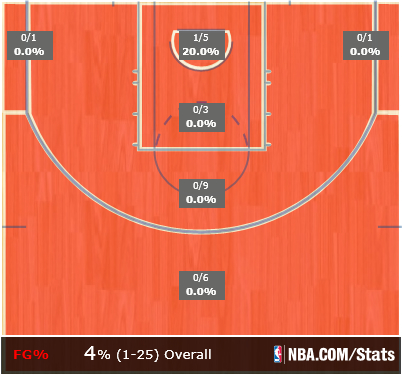
#BLOODEVERYWHERE
Spacing
Taking those poor shots isn’t necessarily by design. Once the Bulls’ halfcourt defense is set up, it’s like a wall in the paint. Getting shots in those key areas is very difficult, and the two corner attempts the Nets had were from Jerry Stackhouse (who shot his fourth airball of the series) and Gerald Wallace (who the Bulls are deliberately leaving wide open from beyond the arc).
The Nets are a little trapped right now by their own offensive ineptitude. Wallace in particular has been a huge liability; his surprising season-long nosedive into ineffectiveness has turned Reggie Evans — whose ineffectiveness offensively was well-established long before Brooklyn — into a major liability. The Nets have struggled mightily with both players on the floor in their two playoff losses: with Evans & Wallace on-court, the Nets are a -26 in 42 minutes, with them off the court, they’re a +15 in 54. Teams already feel no need to defend Evans anywhere except at the rim (and Evans, who lacks explosiveness, gives quick defenders time to recover even there), and if Wallace can be roamed off of, there’s suddenly a lot of defenders for few offensive options.
The solution isn’t as easy as “take them out.” Wallace and Evans are still the team’s best defenders (though Lopez’s seven-block effort last night may have suddenly thrown him into the conversation), and there isn’t exactly a hotbed of talent behind them — Jerry Stackhouse is 1-10 in 24 playoff minutes, MarShon Brooks is a darling but sees defense as an allergen, Kris Humphries was pronounced legally dead three months ago, and Andray Blatche can only play so many minutes when he’s needed as a backup 5. (As for Keith Bogans… well, I don’t really know why he didn’t play last night. He was active and Chicago is his former team, no less. I’m not going to speculate.)
But at the very least, the two each played 25 minutes Thursday night… and all of them together. At the very least, it’s probably smartest to stagger the minutes of your best defenders and worst offensive starters.

